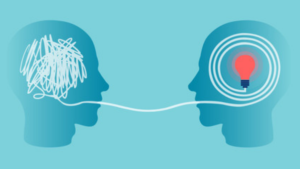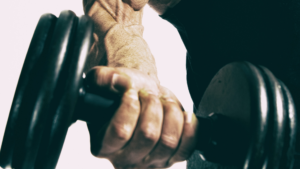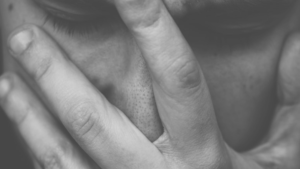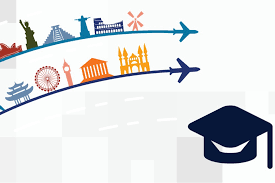
5 min read | Career Planning
Study Abroad: Unexplored Courses for Physios
Written by Jessica Gomes
Graphics by Ria Gorey
Share this article
Peek Into
Choosing your Postgraduate Study options is always filled with uncertainty and anxiousness, fluctuating between Sports, MSK, Neuro or CVS is one major constant for all fresh grads.
What if we give you some fresh perspectives?
In this edition, we will focus on shedding light on the unexplored courses while pursuing Physical Therapy abroad.

Masters in physiotherapy with specialization in Behavioral Medicine
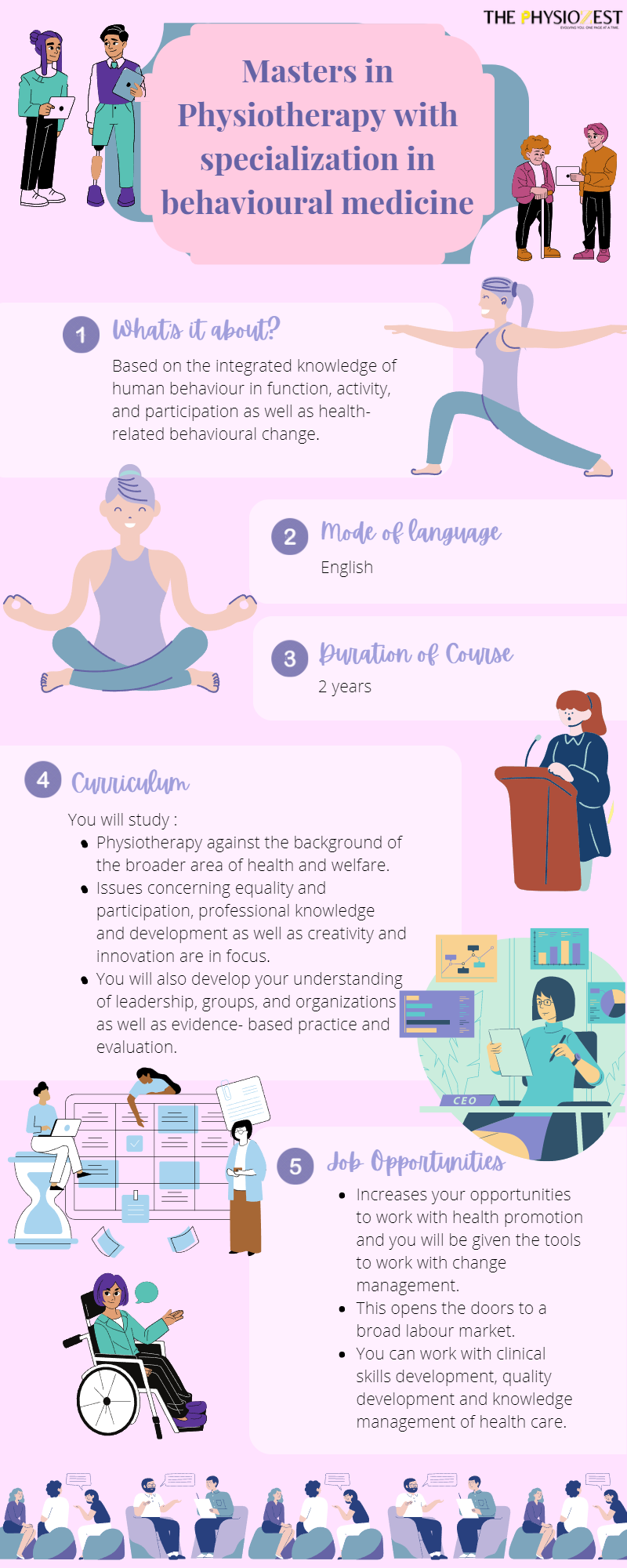
What is it about?
Based on the integrated knowledge of human behaviour in function, activity, and participation as well as health-related behavioural change.
Course offered at
Mälardalen University, Sweden
Curriculum
You will study :
- Physiotherapy is associated with a background of a broader area of health and welfare.
- Issues concerning equality and participation, professional knowledge and development as well as creativity and innovation are in focus.
- You will also develop your understanding of leadership, groups, and organizations as well as evidence-based practice and evaluation.
Mode of language :
English
Duration of course:
2 years
Job opportunities:
- Increases your opportunities to work with health promotion and gaining the tools to work with change management.
- You can work with Clinical Skills Development, Quality Development and Knowledge Management of Health Care.
Dance Movement Therapy: Post-graduation Certification in Dance Movement Therapy.
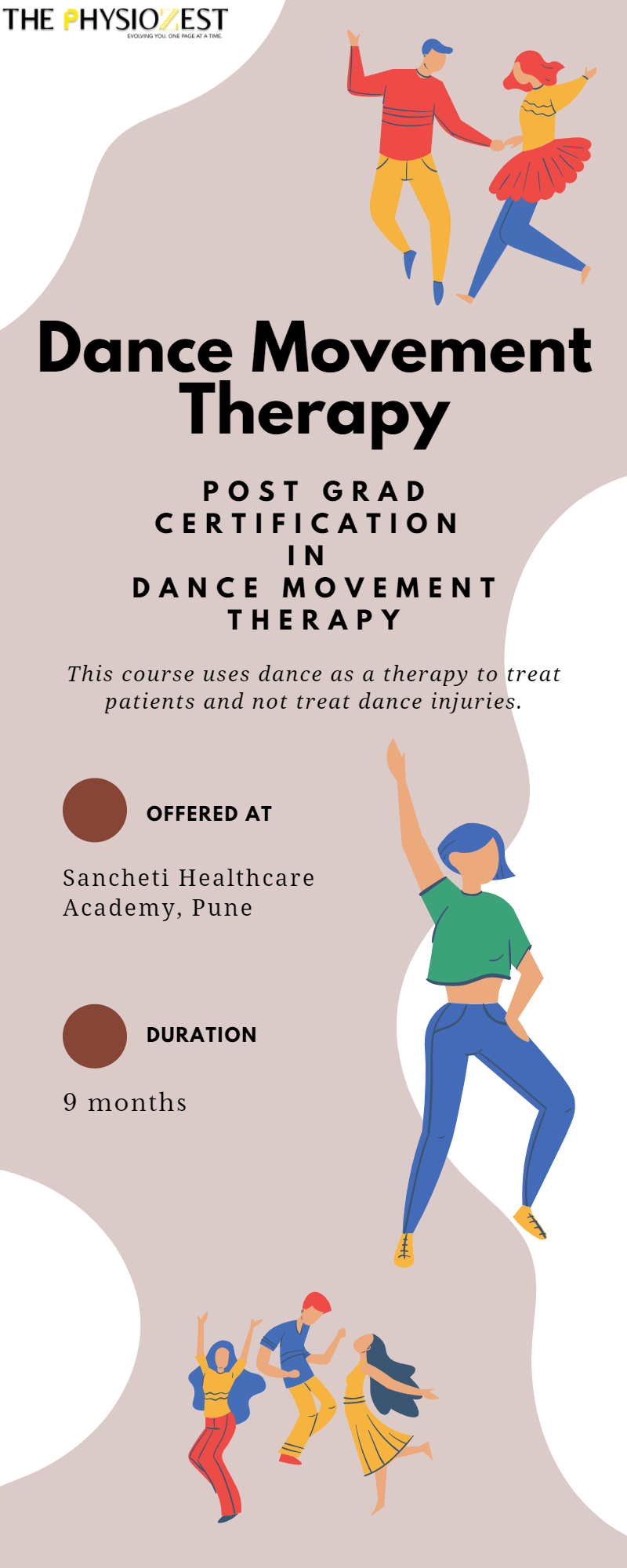
Note: This course uses dance as a therapy to treat patients and not treat dance injuries.
About the program:
Duration of the course :
9 months
Course offered at:
Sancheti Healthcare Academy, Pune.
Dance Medicine
What is Dance Medicine?
Clinical assessment and management of dancer patients.
About the course:
- This course provides evidence-based research on numerous intrinsic and extrinsic factors associated with dance injury.
- Further, it teaches to implement the best-known strategies of preventing injury and reducing the severity of injuries.
- Teaches the skills dance medicine professionals need to improve health outcomes in their patients.
- Practitioners taking this course receive updates on the latest research findings in relevant areas, such as screening, nutrition, ergonomics, biomechanics, injury prevention, and rehabilitation.
Course provided at:
NYU Langone’s Harkness Center for Dance Injuries
Offers both online and live continuing medical education (CME) certification courses
Job opportunities
- Studies indicate that 80 per cent of dancers will experience a major injury during their career, and 95 per cent will experience repetitive stress injuries.
- Owing to the above point, many dancers seek treatment and rehabilitation for maximizing their dance function.
- You can set up your own rehabilitation clinic or work with associations providing treatment.
Gait Rehabilitation
Do you always have a keen eye on everyone’s walking patterns everywhere you go, might it be patients or people walking on the road? Have a look at this course:
‘The Gait Certification Program’
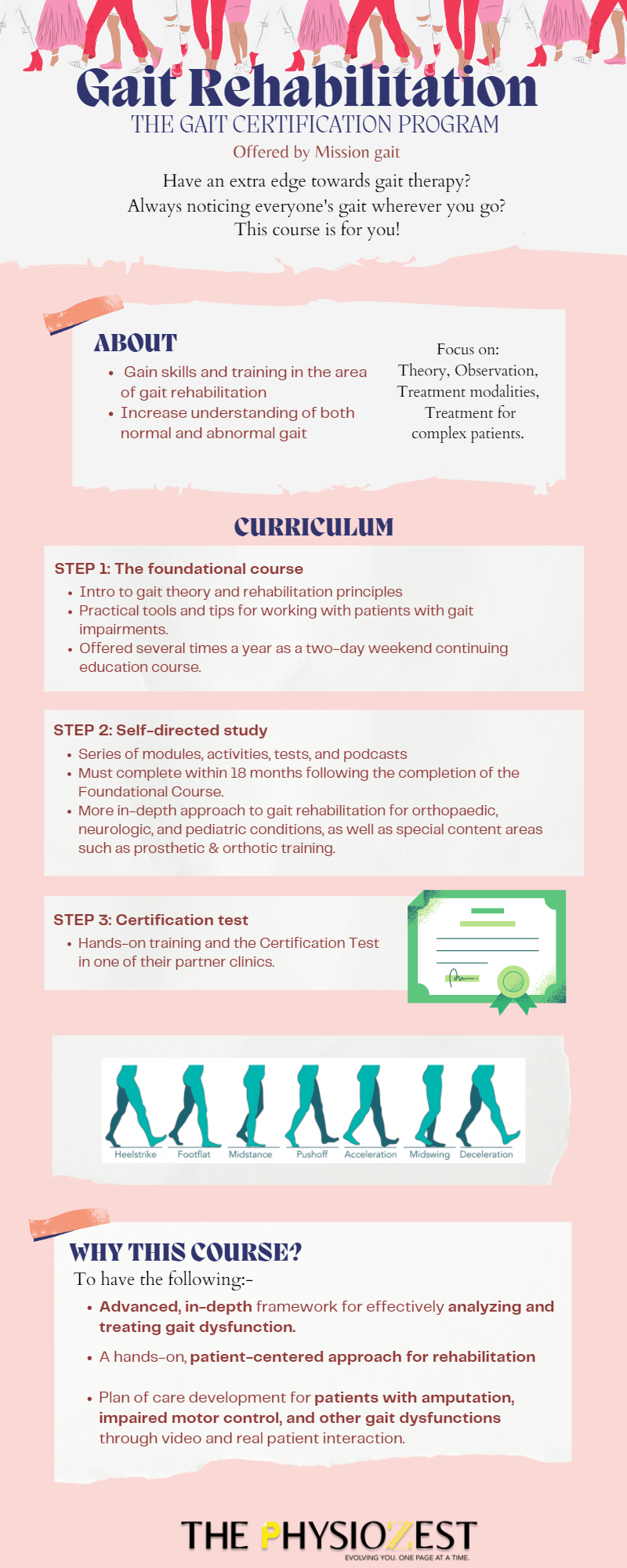
Course offered by
Mission Gait
About the course:
- It is a path for physical therapists to gain skills and training in the area of gait rehabilitation.
- It is designed to increase understanding of both normal and abnormal gait and focuses on theory, observation, treatment modalities, and how to incorporate treatment for complex patients into your practice.
Curriculum
To conclude –
- The foundational course
- This course introduces gait theory, and rehabilitation principles, and offers practical tools and tips for working with patients with gait impairments. It is offered several times a year as a two-day weekend continuing education course.
- This course introduces gait theory, and rehabilitation principles, and offers practical tools and tips for working with patients with gait impairments. It is offered several times a year as a two-day weekend continuing education course.
- Self-directed study
- Practitioners who have completed the Foundational Course and are interested in pursuing the gait certification may be eligible to continue through the Self-Directed Study.
- This is a series of modules, activities, tests, and podcasts that participants must complete within 18 months following the completion of the Foundational Course
- The course guides the participant through a more in-depth approach to gait rehabilitation for orthopaedic, neurologic, and pediatric conditions, as well as special content areas such as prosthetic & orthotic training.
- Practitioners who have completed the Foundational Course and are interested in pursuing the gait certification may be eligible to continue through the Self-Directed Study.
- Certification test
- Upon completion of the Foundational Course and the Self-Directed Study, participants travel to one of our partner clinics for hands-on training and the Certification Test
Why should you do this course?
- Provides clinicians with an advanced, in-depth framework to effectively analyze and treat gait dysfunction.
- Provides a hands-on, patient-centred approach for rehabilitation and plan of care development for patients with amputation, impaired motor control, and other gait dysfunctions through video and real patient interaction.
MSc. In Motion Analysis
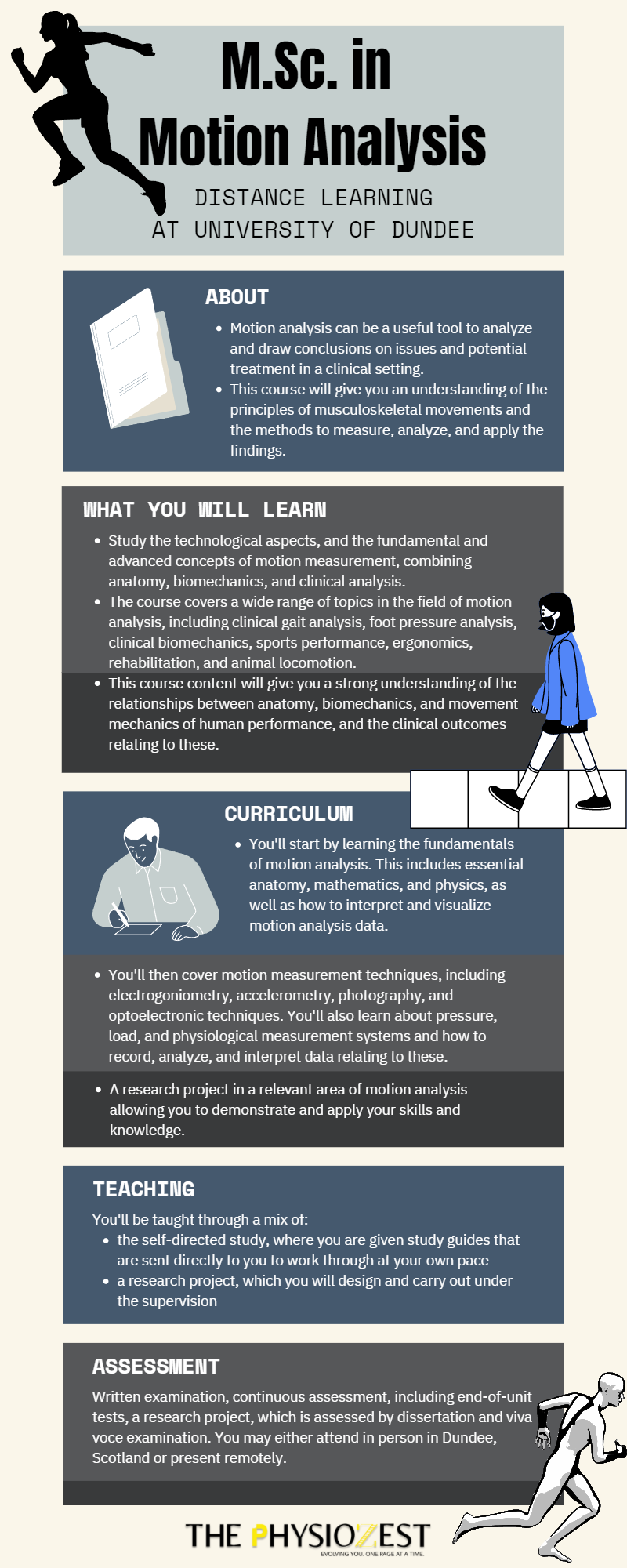
Mode of course:
Distance learning course.
Course offered at:
University of Dundee
About the course:
- Motion analysis can be a useful tool to analyze and draw conclusions on issues and potential treatments in a clinical setting.
- This course will give you an understanding of the principles of musculoskeletal movements and the methods to measure, analyze, and apply the findings.
What will you learn in this course?
- Study the technological aspects, and the fundamental and advanced concepts of motion measurement, combining anatomy, biomechanics, and clinical analysis.
- The course covers a wide range of topics in the field of motion analysis, including clinical gait analysis, foot pressure analysis, clinical biomechanics, sports performance, ergonomics, rehabilitation, and animal locomotion.
- This course content will give you a strong understanding of the relationships between anatomy, biomechanics, and movement mechanics of human performance, and the clinical outcomes relating to these.
Curriculum
- Fundamentals of motion analysis include essential anatomy, mathematics, and physics, as well as how to interpret and visualize motion analysis data.
- Motion measurement techniques, including electrogoniometry, accelerometry, photography, and optoelectronic techniques. You’ll also learn about pressure, load, and physiological measurement systems and how to record, analyze, and interpret data relating to these.
- A research project in a relevant area of motion analysis allows you to demonstrate and apply your skills and knowledge.
Teaching and Assessment:
Teaching
You’ll be taught through a mix of:
- The self-directed study, where you are given study guides that are sent directly to you to work through at your own pace.
- A research project, which you will design and carry out under the supervision.
Assessment is through a combination of:
- Written examination, continuous assessment, including end-of-unit tests, a research project, which is assessed by dissertation and viva voce examination. You may either attend in person in Dundee, Scotland or present remotely.


